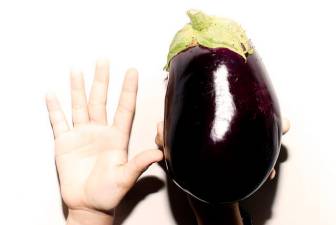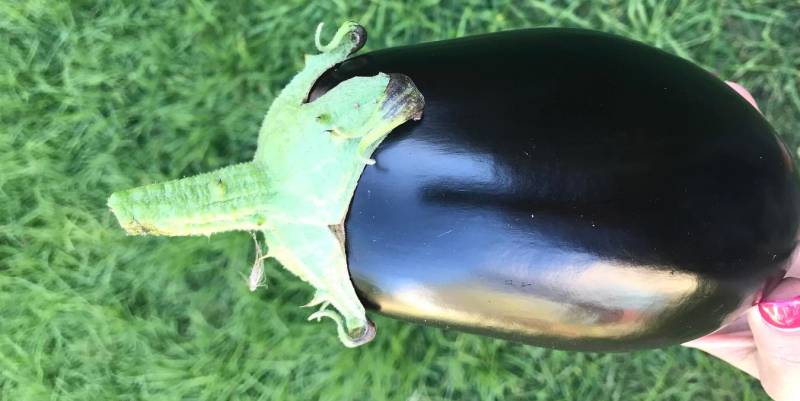Eggplants are a popular food grown by people all over the country. They’re tasty, they can be added to several delicious dishes, they’re nutritious and they’re fun to grow. However, unless you know when to pick eggplant, you could end up sabotaging all your hard work.
Although climate conditions, soil quality and precipitation rates will have a major impact on how your eggplant will turn out, picking it at the right time will have the biggest impact. By doing so, you’ll get the most flavor out of your eggplant. So, when is eggplant ready to pick?
Under-ripe vs over-ripe
Eggplants that are picked when they’re a little premature will usually have a sweeter taste. So, if you want your eggplant to have a little more zing, simply pick it a week or so earlier. On the other hand, there are no benefits to letting your eggplant become over-ripe. In fact, when your eggplant becomes over-ripe, it’ll taste bitter and eventually start to rot.
Another benefit to picking your eggplant a little earlier is the ability to get the most out of your plant. Picking your eggplant stimulates your plant’s ability to produce more while also lengthening the growing season.
When does an eggplant become ripe?
There are three different varieties of eggplant when it comes to the ripening process. The three varieties include short-, mid- and long-season eggplants. Short-season eggplants usually mature on average about 60 to 70 days after they’ve been planted. Some of the different varieties of short-season eggplants include:
☆ Diamond
☆ Purple Rain
☆ Vittoria
☆ Morden Midget
☆ Purple Blush
☆ And more
Mid-season eggplants take a little longer to mature than short-season eggplants. Mid-season eggplants usually mature in about 70 to 80 days after they have been planted. Some of the different kinds of mid-season eggplants include:
☆ Black Beauty
☆ Casper
☆ Cloud Nine
☆ Thai Green
☆ Violetta Lunga
☆ And more
Last but definitely not least, the long-season eggplant takes the longest to mature out of the group. These eggplants take anywhere from 80 to 100 days to fully mature. Some of the different kinds of long-season eggplant include:
☆ Blush Eggplant
☆ Listada de Gandia
☆ Louisiana Long Green
☆ Rosa Bianca
☆ Turkish Orange
☆ And more
Although these timelines are a good way to tell on average when your eggplant will fully mature, you should never rely on them solely. You will also want to pay attention to the size and shine.
Size is a good way to know when eggplant is ready to pick
Although eggplants vary slightly in size, when an eggplant has fully matured, it’ll be about the average of your hand or even a little larger. Many people think that when they grow eggplants, they’ll end up being about the size that they see in their grocery stores. The truth is, homegrown eggplants usually never grow to the size that you see at the market.
When is an eggplant ripe? Look at the shine.
Another way you can tell if your eggplant is fully matured is looking at its shine. If your eggplant is stull dull and does not have a shine to it, you’ll want to refrain from picking it from your plant for a few more weeks. If you are unsure, you can always hold a lantern or a flashlight over it to get a better look.
Harvesting eggplant the right way
When it is time to pick your eggplants, you will want to make sure you do it correctly. This part of the gardening process is very important. Remember, before you pick your eggplant, make sure that it’s about the size of your hand or a little bigger and has a nice shin to it. Once you know that it’s ready to be picked, you’ll then want to follow the steps below.
- When you grab your eggplant, do it softly and with care. Using force or a strong grip could bruise the eggplant and lead to premature rotting. In addition to this, you’ll want to be careful of the thorns on the branch.
- Never pull the eggplant off your plant by your hands. Always use a pair of garden shears sharp scissors. This can bruise the eggplant and cause it to go bad.
- When you cut your eggplant from the branch, leave a few inches of stem connected to the eggplant. This will help keep it good for a longer period of time.
Once you are finished harvesting your eggplant, you can then start to enjoy them with your meals. Adding eggplant to your salads, pastas and other dishes will really increase the overall flavor. However, it’s important to point out that you should always wash your eggplant before you begin to cut them up and add them to your dishes.
- Using Borax in the Dishwasher - May 27, 2020
- Towel Ring Height and Other Fixtures: Proper Measurements - May 1, 2020
- Homemade Paint Removers for Every Surface - April 27, 2020



Rick
Sunday 15th of August 2021
If an eggplant has lost its purple skin on one area like it's a large patch of light brown color but still hard to the touch, does this mean it's not any good? Thank you!😊
Kim
Monday 30th of July 2018
Thank you Allison!